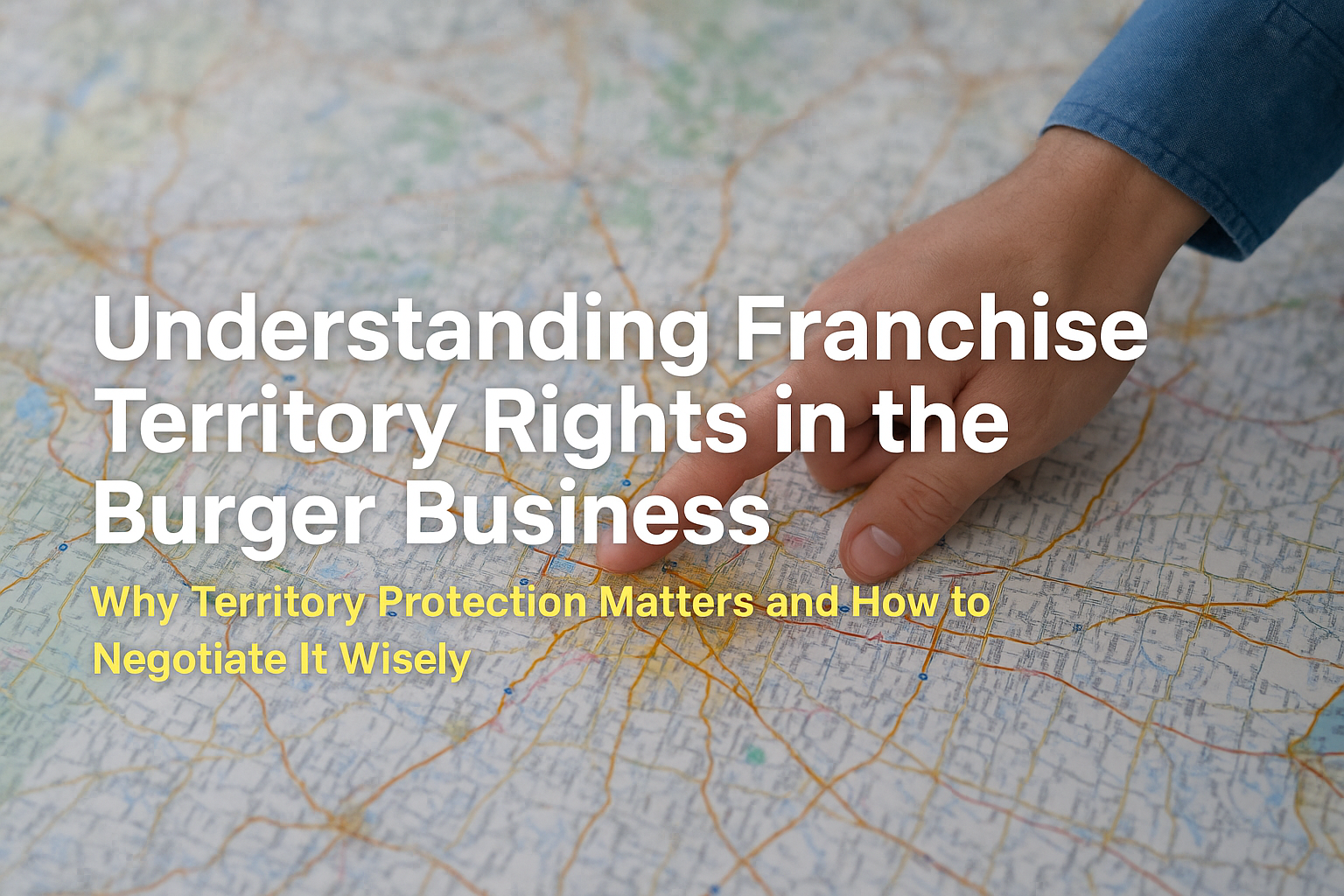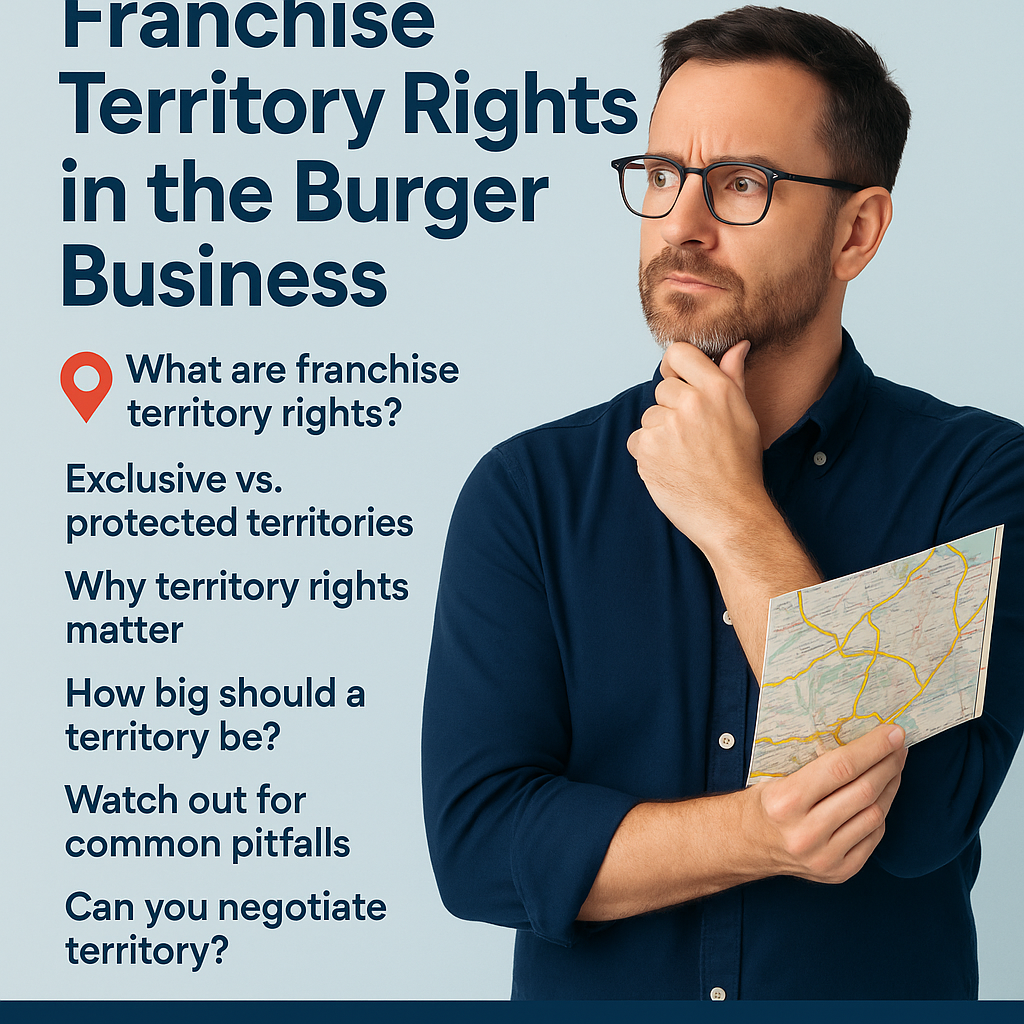
Why Territory Protection Matters and How to Negotiate It Wisely
When buying a burger franchise, most new owners focus on the brand, the food, and the marketing — but one of the most critical (and often overlooked) details is your territory rights.
At BurgerFranchiseMaster.com, powered by Star Brands Consulting Group, we guide franchisees through the legal and strategic importance of territory protection — helping you avoid internal competition, protect your investment, and scale with confidence.
Here’s what every aspiring burger franchisee should know about franchise territory rights before signing an agreement.
🧾 What Are Franchise Territory Rights?

Territory rights define the geographic area where a franchisor agrees not to open competing locations or allow other franchisees to operate.
There are two major types:
- Exclusive Territory: You’re the only franchisee allowed to operate in that region.
- Protected Territory: You have some protection, but certain exceptions (e.g., delivery, ghost kitchens, kiosks) may apply.
Not all burger franchises offer territory protection — some operate on an open market model.
🧠 Why Territory Rights Matter
- Avoid Cannibalization: You don’t want another unit opening down the street and splitting your customer base.
- Boost Valuation: Protected areas give you a more valuable resale asset.
- Franchise Growth Strategy: If you plan to open multiple stores, protected rights give you room to expand.
- Marketing Efficiency: Territory clarity helps you focus your local campaigns.
In short: A clear territory gives you room to breathe and grow.
📍 How Big Should a Territory Be?
Territory size varies depending on:
- Population density (urban vs. suburban vs. rural)
- Brand model (fast casual vs. food truck vs. dine-in)
- Competition strategy (some franchisors want brand visibility everywhere)
Typical examples:
- Urban: 1–2 square miles or specific zip codes
- Suburban: 3–5 miles radius
- Rural: Entire towns or counties
Don’t assume — get the exact boundaries in writing.
⚠️ Watch Out for These Common Pitfalls
- Delivery carve-outs: Some franchisors may allow other franchisees to deliver into your area.
- Ghost kitchen loopholes: A “virtual” store could be permitted within your physical zone.
- Ambiguity in contract language: Terms like “reasonable distance” can be risky.
- First-right-of-refusal clauses: Make sure you can expand before someone else does.
Always have a franchise attorney review your agreement before signing.
💬 Can You Negotiate Territory?
Yes — in many cases, territory size and protection are negotiable before you sign the Franchise Agreement.
Tips:
- Use your market research to justify your ask
- Offer to commit to multi-unit development in exchange for larger rights
- Ensure your rights are clear in the Franchise Disclosure Document (FDD) and final agreement
Don’t leave your territory to chance — it’s your turf and your future.
Final Thoughts
Territory rights aren’t just fine print — they’re the foundation of your franchise success. Protecting your turf means protecting your revenue, brand equity, and growth potential.
Need Help Evaluating Franchise Territory Terms?
At BurgerFranchiseMaster.com, backed by Star Brands Consulting Group, we help future franchisees:
- Understand FDD territory language
- Assess local market saturation
- Negotiate territory protection and multi-unit deals
- Avoid costly territorial conflicts down the road
📞 Schedule a Territory Review Call
📥 Download Our Burger Franchise Territory Negotiation Checklist (PDF)

Leave a Reply